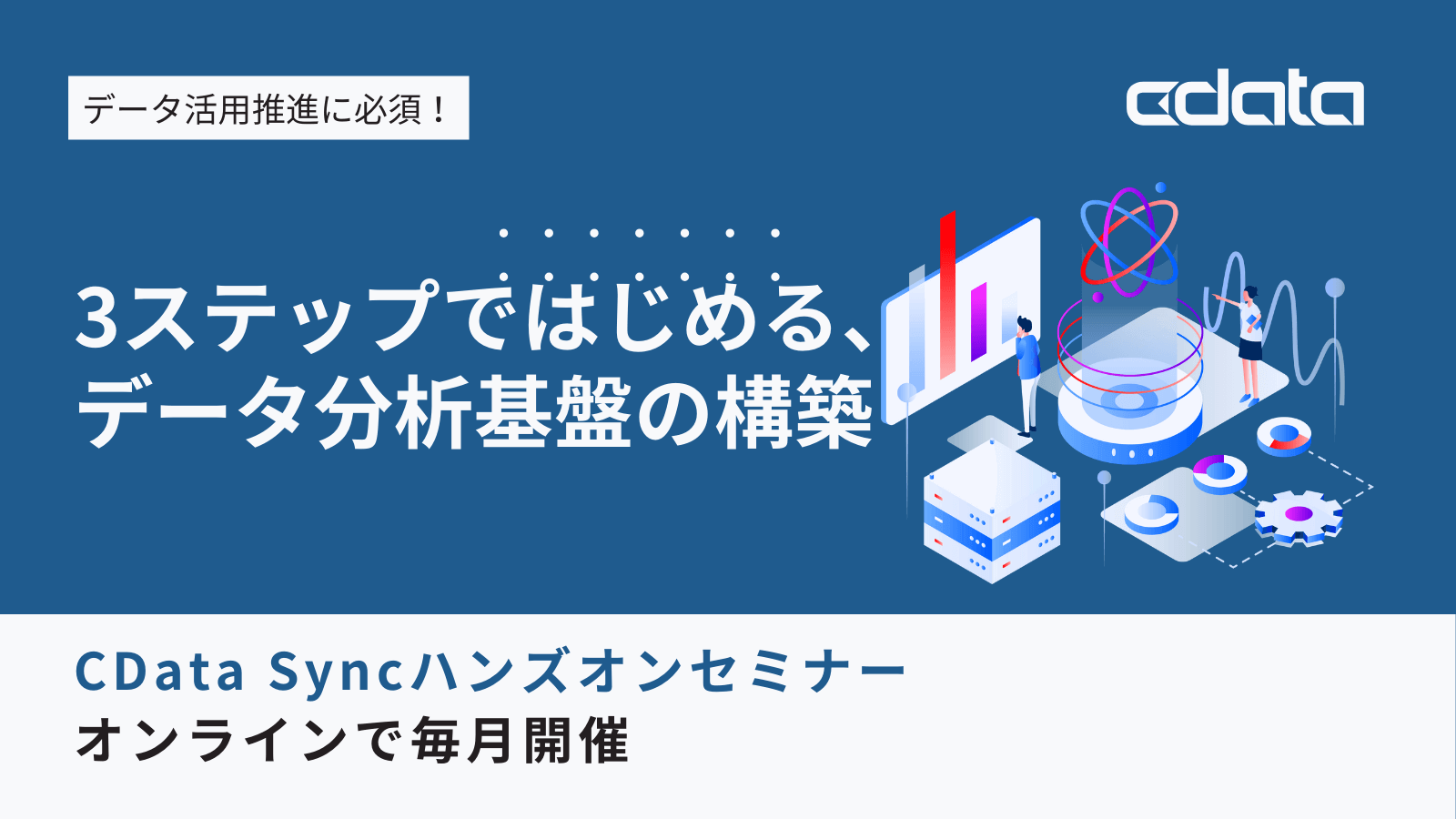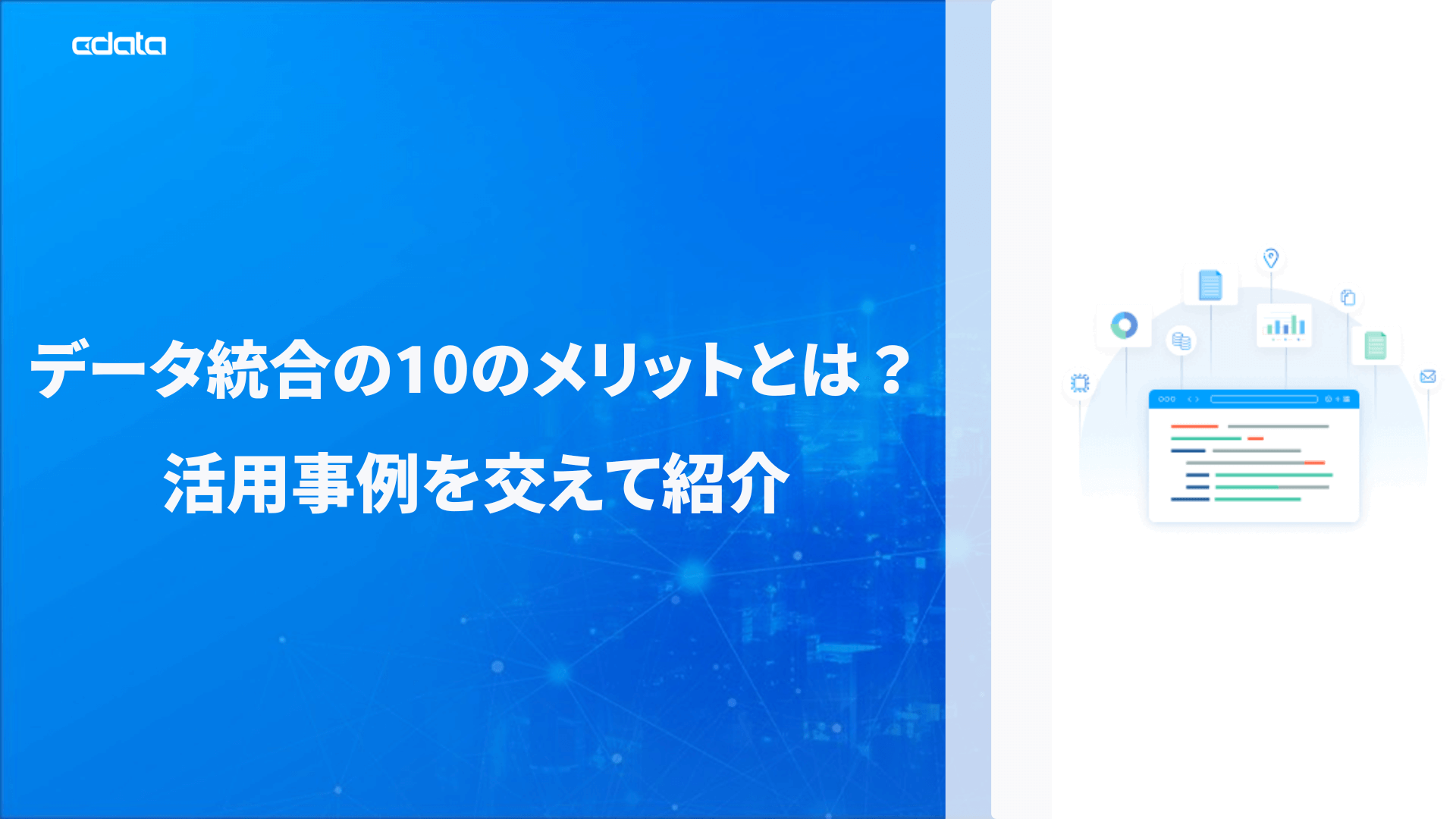ノーコードでクラウド上のデータとの連携を実現。
詳細はこちら →CData Software Japan - ナレッジベース
Latest Articles
- MySQL のデータをノーコードでREST API として公開する方法:CData API Server
- CData Sync AMI をAmazon Web Services(AWS)で起動
- Connect Cloud Guide: Derived Views, Saved Queries, and Custom Reports
- Connect Cloud Guide: SSO (Single Sign-On) and User-Defined Credentials
- Connect Cloud クイックスタート
- Shopify APIのバージョンアップに伴う弊社製品の対応について
Latest KB Entries
- DBAmp: Serial Number Expiration Date Shows 1999 or Expired
- CData Drivers のライセンスについて
- Spring4Shell に関する概要
- Update Required: HubSpot Connectivity
- CData Sync で差分更新を設定
- Apache Log4j2 Overview
ODBC Drivers
- [ article ] Visio のシェイプとMailChimp データを連携
- [ article ] Tableau Server へのSAP Hybris C4C ダッシュボードの公開・パブリッシュ
- [ article ] Informatica PowerCenter でBing Search ...
- [ article ] Linux/Unix 上でPHP からAdobe Analytics のデータに接続・連携
JDBC Drivers
- [ article ] AWS Glue ジョブからAirtable データにJDBC 経由で接続
- [ article ] Microsoft Planner データをRACCOON から連携して利用
- [ article ] IntelliJ からZoho CRM データに連携
- [ article ] Elasticsearch へLogstash 経由でCassandra データをロードする方法
SSIS Components
- [ article ] SSIS を使ってMicrosoft Planner データをSQL Server にインポート
- [ article ] PCA Sales データからSQL Server ...
- [ article ] Spark をSSIS 経由でSQL サーバーにバックアップする
- [ article ] SSIS を使ってSansan データをSQL Server にインポート
ADO.NET Providers
- [ article ] PowerBuilder からActiveCampaign データに接続してみた
- [ article ] SSAS でAlloyDB データに連携するOLAP Cube を作成
- [ article ] Visual Studio でチャートコントロールと Sage 50 UK をデータバインド
- [ article ] ColdFusion にリアルタイムYahoo! Shopping ...
Excel Add-Ins
- [ article ] SharePoint Excel Services からCData ODBC Driver for ...
- [ article ] Microsoft Power Query からMarkLogic データに連携してExcel ...
- [ article ] Apache Airflow でSharePoint Excel Services ...
- [ article ] Mac OS X 上のMS Excel でZoho CRM データを連携利用
API Server
- [ article ] Microsoft Power Query からOData データに連携してExcel から利用
- [ article ] MicroStrategy Web でCData Software JDBC Driver for ...
- [ article ] OData データをBoomi AtomSphere で連携利用する方法:CData JDBC ...
- [ article ] Alteryx Designer でOData データを準備、ブレンディング、分析する
Data Sync
- [ article ] Elasticsearch データからSQL Server ...
- [ article ] DB2 へのGoogle Spanner データのETL/ELT ...
- [ article ] Office 365 データを複数のデータベースにレプリケーション。
- [ article ] Microsoft SQL server へのSalesforce Pardot ...
Windows PowerShell
- [ article ] SurveyMonkey データをPowerShell でMySQL にレプリケーションする方法
- [ article ] Facebook データをPowerShell script でSQL Server ...
- [ article ] PowerShell を使ってBカート データをSQL Server にレプリケーション
- [ article ] PowerShell を使ってFacebook Ads データをSQL Server ...
FireDAC Components
- [ article ] Delphi のTwitter データへのデータバインドコントロール
- [ article ] Delphi のSybase データへのデータバインドコントロール
- [ article ] Delphi のHDFS データへのデータバインドコントロール
- [ article ] Delphi のFacebook データへのデータバインドコントロール






